Island birds face a new and horrific threat, but help is on the way.
“Zombie mice,” as they’re called by wildlife advocates, are non-native mice that adapt to environments into which humans have inadvertently thrust them. For reasons not fully understood but likely resulting from drought and food shortages caused by climate change, their behavior suddenly transforms. These mice make a dramatic change in feeding habits, devouring the innards and flesh of island-nesting birds.
In 2001 the first evidence of zombie-mouse predation was seen on the United Kingdom’s 25-square-mile Gough Island in the central South Atlantic. A year later it was seen on South Africa’s 186-square-mile Marion Island in the southwest Indian Ocean. Only in 2015 was zombie-mouse predation observed on 1.7-square-mile Sand Island in the Midway National Wildlife Refuge in the Northwestern Hawaiian Islands.
On other islands — such as the Farallons, 27 miles off San Francisco — house mice apparently have not yet transformed to zombies, but may do so at any time.
In a National Geographic podcast, wildlife photographer Tom Peschak describes what he encountered on Marion Island, breeding habitat for 28 bird species including light-mantled, wandering, grey-headed and black-browed albatrosses:
“In this landscape of black and green and gray there is this red that pops out at you all of a sudden…. You come around this boulder and you are literally looking at a bird that has been scalped. The entire back of its head and the entire neck has been eaten away.”
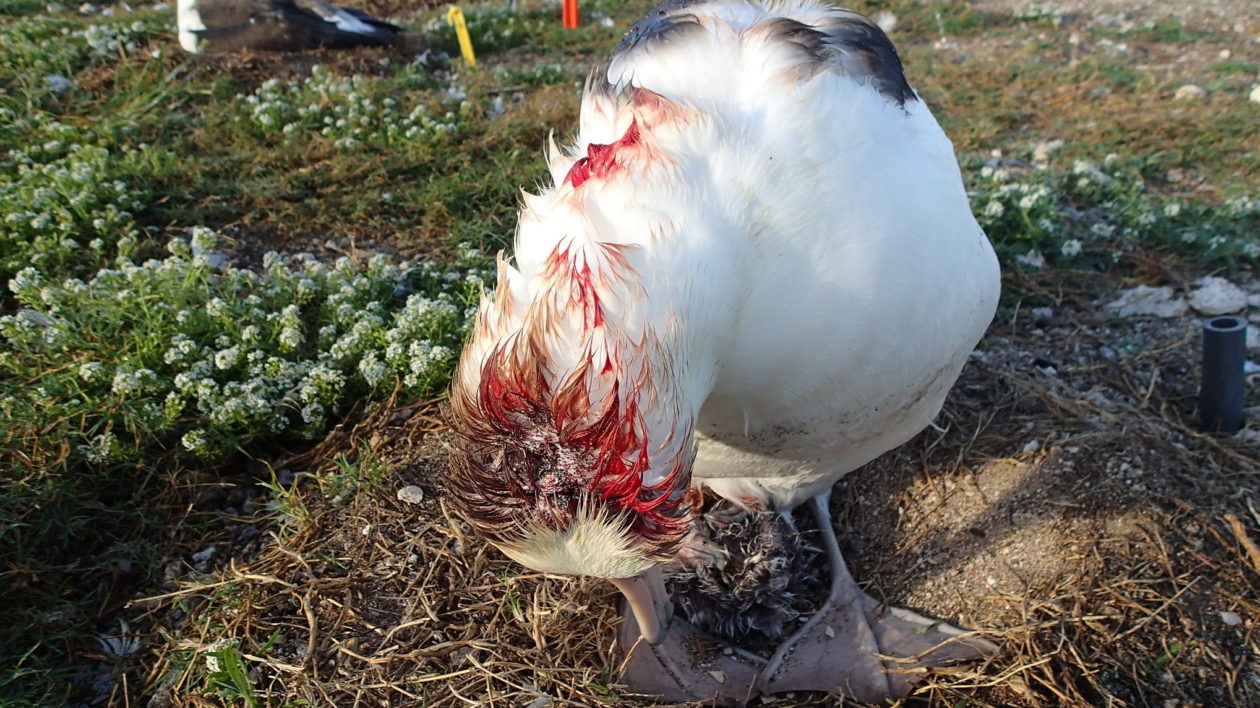
Night videos on Marion and Sand Islands show packs of mice crawling over albatross chicks and adults, opening abdomens of chicks, and perching on heads of adults. Chicks are slowly consumed, often from the inside out. It may take days for eviscerated chicks to die. Scalped adults can linger for weeks.
“It’s remarkable that such a tiny predator can take such large prey,” remarks Pacific islands seabird coordinator Dr. Beth Flint of the U.S. Fish and Wildlife Service (USFWS). “Albatrosses are extremely attentive to their eggs; they never get off them. When they’re incubating they fast and go into a zen-like trance. That’s why they tolerate little biting creatures climbing up their backs.”
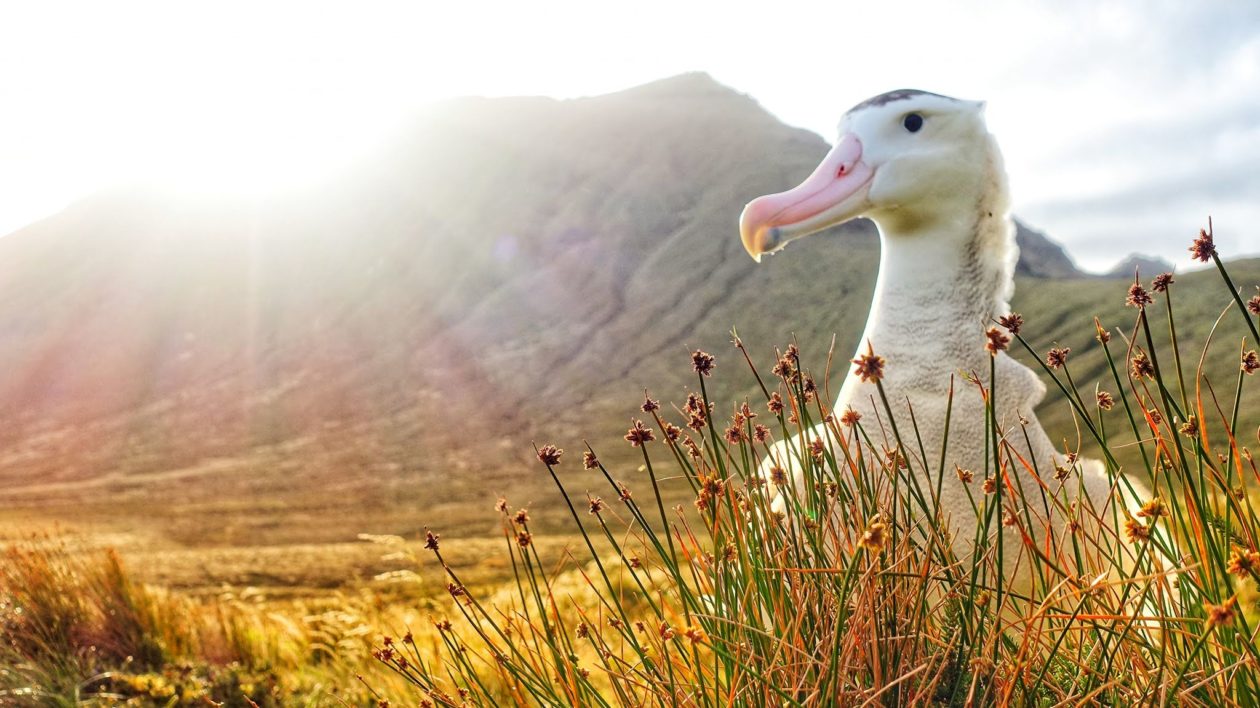
Gough Island
On islands without invasive rodents something like 70 percent of albatross nesting attempts succeed on an average year. On Gough Island the average is 29 percent.
Gough, a World Heritage Site, is widely considered the most important seabird sanctuary left on Earth, providing breeding habitat for 8 million birds representing 24 species. Among these are virtually all the world’s critically endangered Tristan albatrosses. Only 2,000 pairs remain.

If mice aren’t eradicated from Gough, they’ll usher into extinction the Tristan albatross along with two birds found only on the island — the Gough bunting and a MacGillivray’s prion morph unknown until 2013.
Albatross mortality gets most attention because all species breed above ground. But the vast majority of birds on Gough breed underground. These include 14 species of burrowing petrels, among them the endangered Atlantic petrel. Like albatrosses, they’ve evolved no defenses against rodents. For these birds, predation is harder to document, but it’s happening.
According to a study published in the journal Ibis, mice on Gough Island kill two million seabird chicks a year.
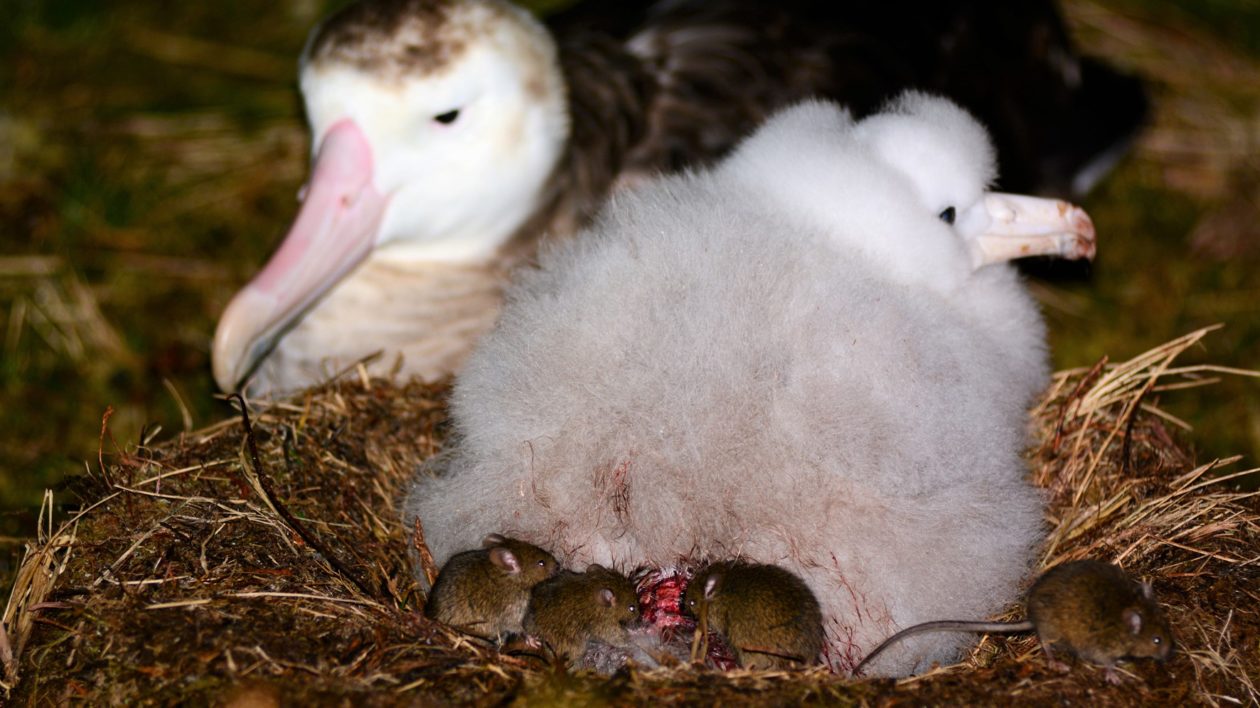
Midway
House mice and black rats were accidentally introduced to Midway Atoll by the Navy during World War II. Rats were eradicated in 1996, but mice persist on Sand Island, biggest of the atoll’s three islands.
The refuge sustains at least 70 percent of the planet’s Laysan albatrosses. When the first wounds appeared managers suspected birds of prey. But remote cameras revealed mice swarming over the birds’ backs and heads.
“The mice were chewing through skin, into muscle and fat, and even into body cavities,” says Flint. Albatrosses are long-lived, monogamous and lay just one egg. So adult mortality can do major damage to a population.
Evidence of predation on other Midway species is lacking. But Flint offers this: “I suspect that for many years mice were suppressing our Bulwer’s petrels whose breeding season is typically timed to when mice are hungriest. We’ve had brilliant resurgence of Bonin petrels, which are winter breeders. But we haven’t seen resurgence of Bulwer’s petrels, which breed in spring. The other winter breeder is the Tristram’s storm-petrel, and it’s increasing like the Bonin petrel.”
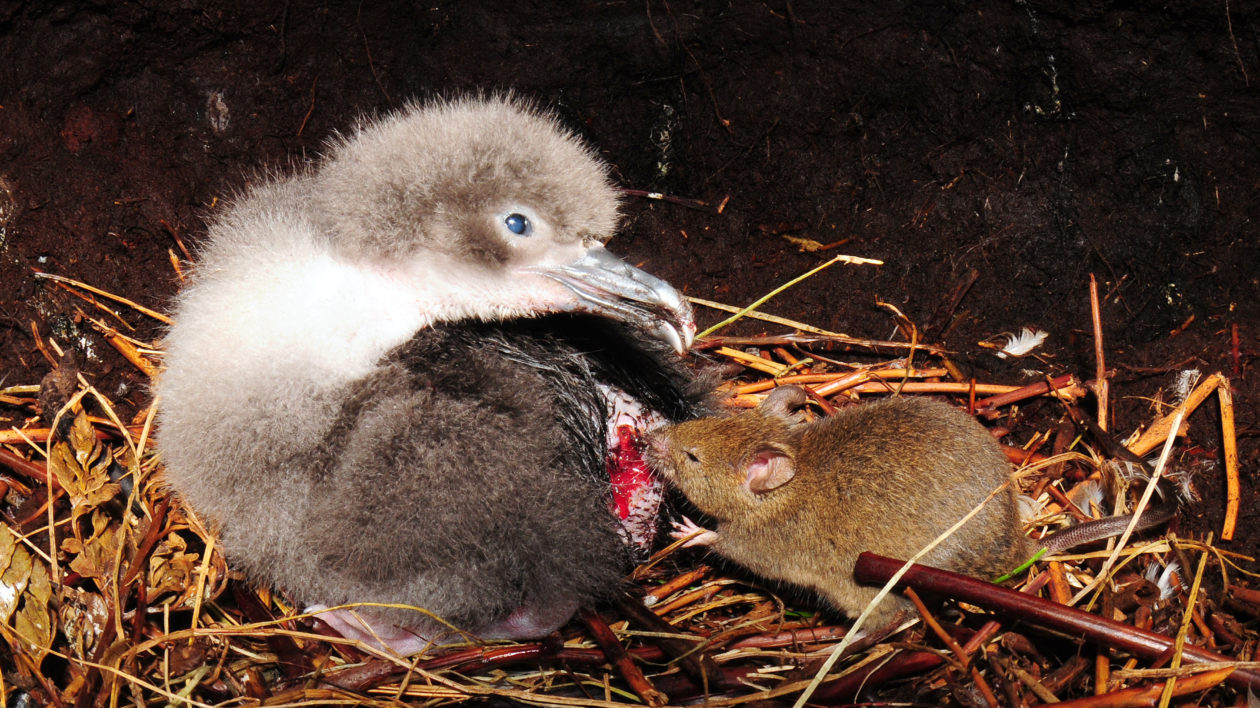
In 2020 recovery teams will attempt mouse eradication on Sand and Gough. Marion will also be restored, though the date has not been set. Bait laced with the rodenticide brodifacoum will be dropped from helicopters.
On the mainland brodifacoum has been grossly abused by the public, to the detriment of pets and wildlife. But when properly applied by professional wildlife managers it’s an essential tool for island recovery. Unlike other rodenticides, brodifacoum is lethal after a single dose, so rodents don’t learn to associate it with danger.
About 700 islands have been cleared of alien rodents, most with brodifacoum. Recovery of native wildlife has been swift and spectacular.
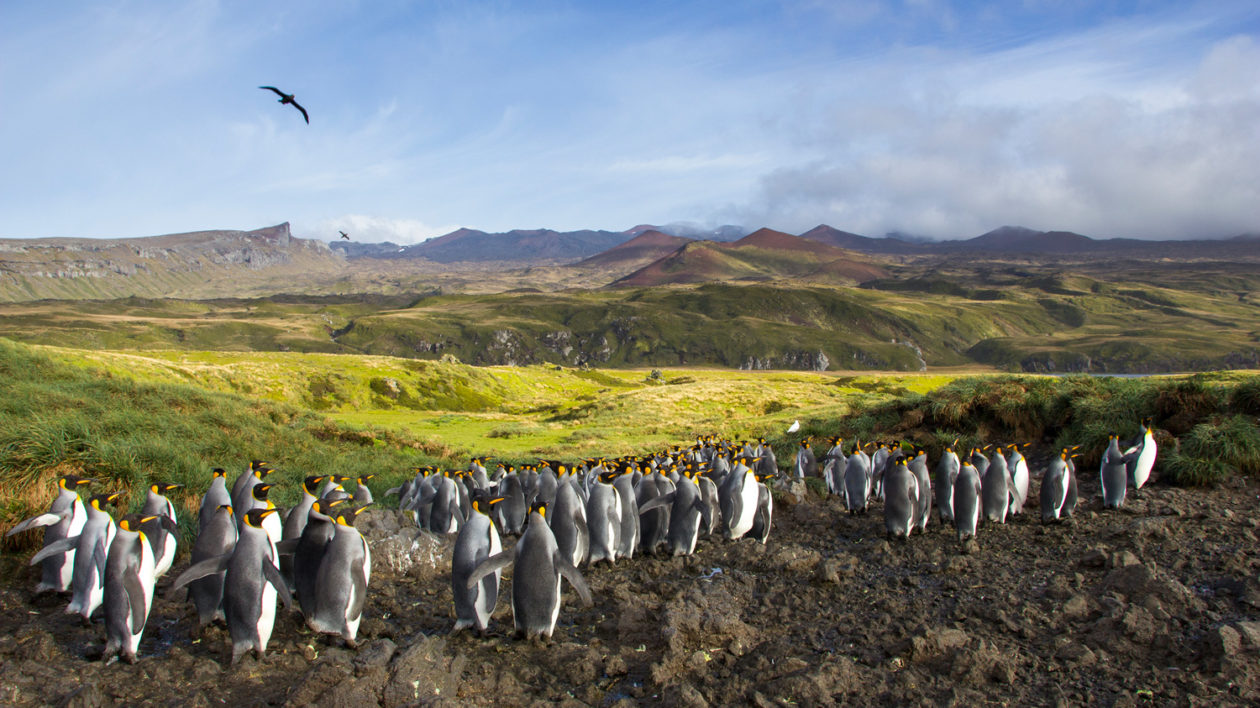
On Sand Island, bristle-thighed curlews and critically endangered Laysan ducks might eat the bait. So managers will evacuate both to mouse-free Eastern Island a mile away, holding them until the bait breaks down.
Migratory shorebirds such as Pacific golden plovers and ruddy turnstones could also be at risk. But bait will be applied before they show up. If any arrive early, they’ll be hazed away from Sand Island.
A pre-eradication reprieve for Midway’s native birds seems to have been effected with a rodenticide with low risk to non-targets — Agrid3, basically a Vitamin D overdose. Its inefficiency makes it strictly a temporary fix. But on parts of small islands it can sometimes kill enough mice that, at least for a while, they don’t exhaust the seed and insect supply and are therefore less ravenous.
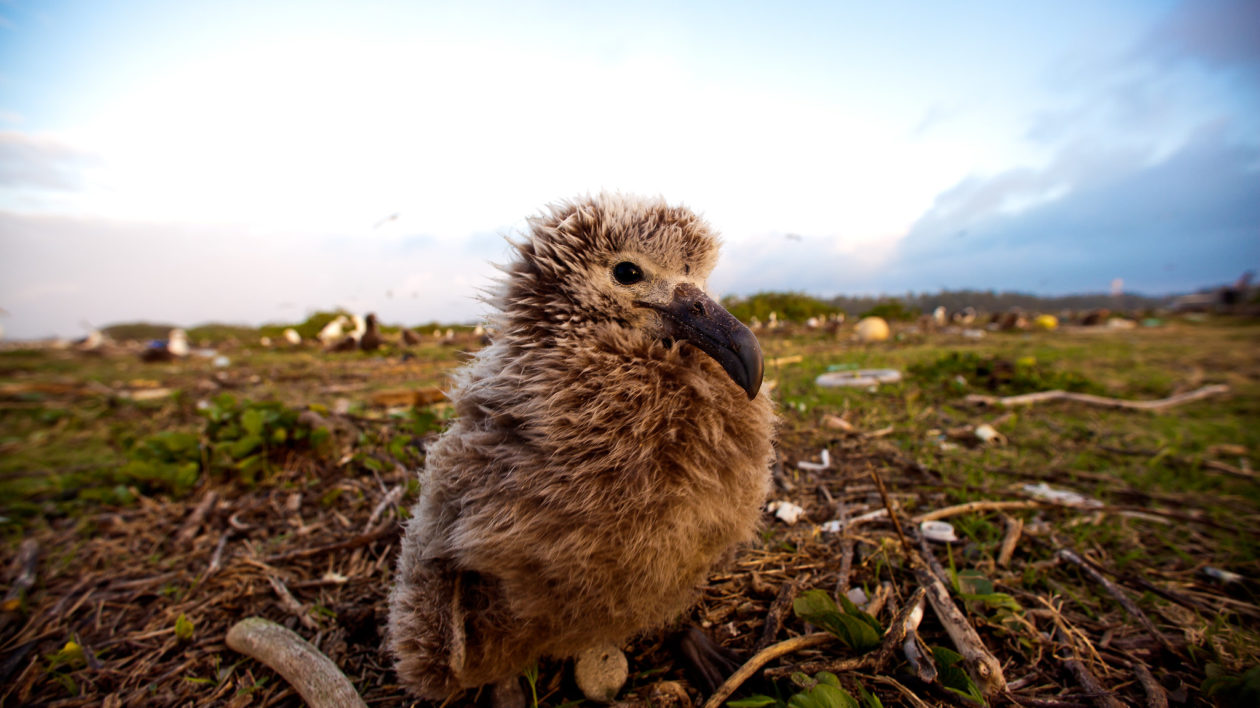
“It’s not being applied island-wide,” says Wes Jolley of Island Conservation, one of the project’s partners. “But it does reduce mouse numbers in key areas at key times.”
Eradication on the much bigger, steeper, colder islands of Marion and Gough will be far more difficult. It will happen in sub-Antarctic winter because most birds will be at sea and mice will be hungriest.
Helicopters, other equipment, bait and personnel will have to be transported by icebreaker. Flying time will be limited by brief sunlight and frequent gales.
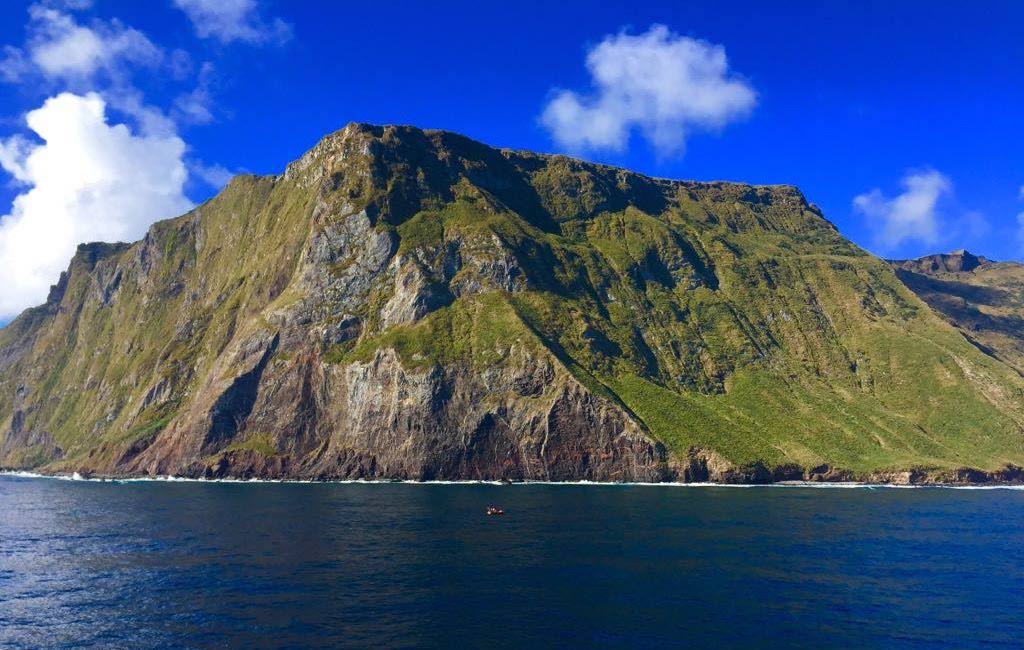
Opposition
Rodent eradication projects around the globe are increasingly under fire from animal-rights groups and people who oppose all poisons in all situations no matter what.
UK-based Animal Aid rails against the Gough Island project as follows: “We are shocked that this well respected organization [the Royal Society for the Protection of Birds, a principal partner] would resort to such unthinkably cruel tactics. Mice have been on Gough Island for more than a century, and this sudden urgency to eradicate them using such cruel methods seems disproportionate.”
In 1949 house cats were introduced to Marion in a vain attempt to control mice infesting the island’s only building, a meteorological station. Now feral-cat support groups claim (falsely) that brodifacoum might not be needed if a 14-year eradication project hadn’t rendered the island cat free in 1991. This despite the fact that the cats were killing an estimated 450,000 birds a year.
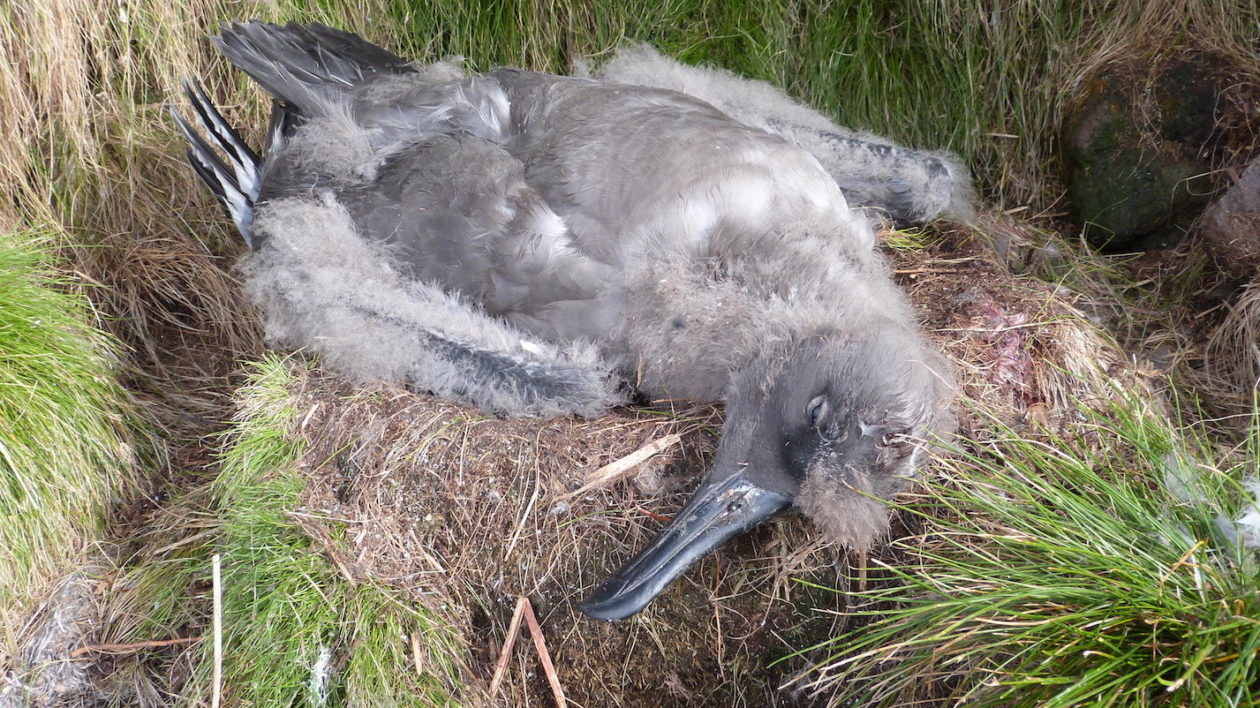
Managers at Midway have encountered only light opposition, but Brad Keitt, director of the American Bird Conservancy’s Oceans and Islands Program, expects more from the same sources that have impeded mouse eradication on the Farallon Islands National Wildlife Refuge, planned by the USFWS since 2004. This refuge sustains the largest seabird colony in the contiguous states — at least 300,000 individuals representing 13 species.
No one can predict if or when Farallon mice will transform to zombies. But they’re already trashing the native ecosystem and further endangering the planet’s 8,000 remaining ashy storm-petrels, of which about half nest on the refuge.
When the mouse population peaks in October densities are among the highest ever recorded. The ground undulates with mice. They prey on Farallon camel crickets and Farallon arboreal salamanders (found nowhere else), spread seeds of invasive plants, devour pollinators of native plants, and are thought to infect shore habitat of seals and sea lions with dangerous pathogens.
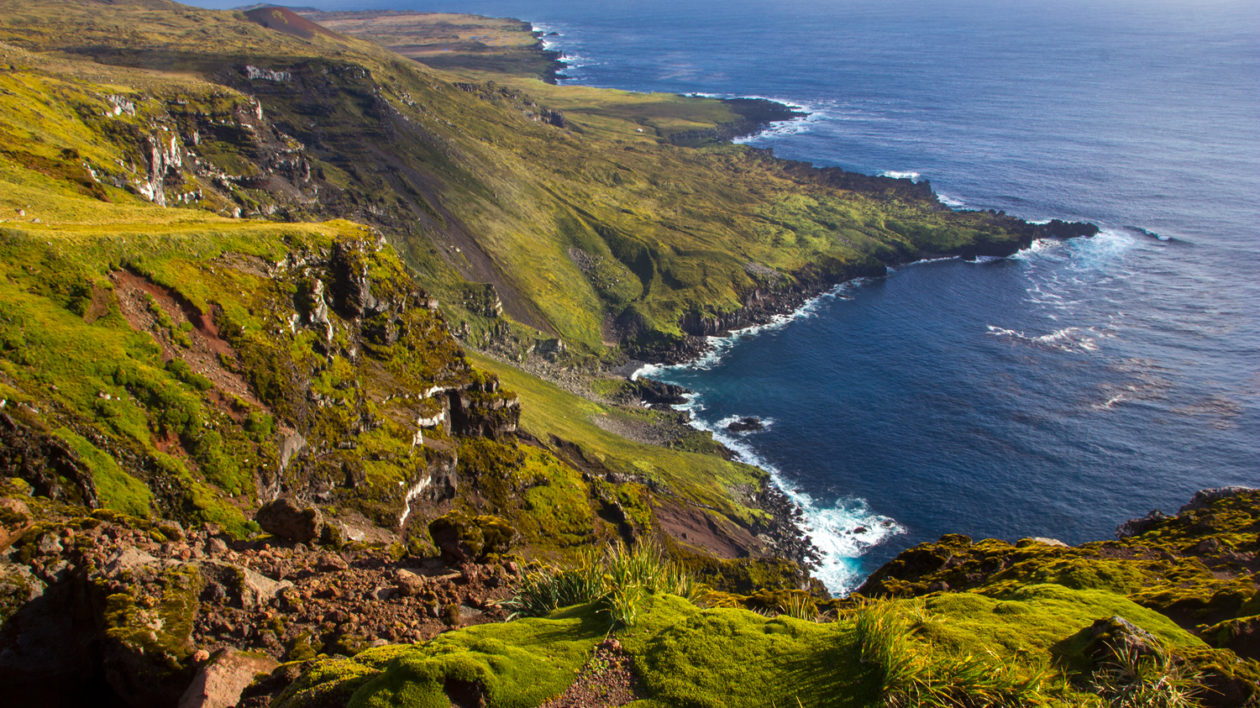
Before the mouse infestation, migrating burrowing owls rested briefly on the refuge, then pressed on. Now they linger into winter, feasting on mice until the population crashes (mostly from weather). Then they switch to ashy storm-petrels. In spring the mouse population explodes again.
Among the more strident opponents of Farallon mouse eradication are the Ocean Foundation, Animal Legal Defense Fund, Wildcare and former Wildcare employee Maggie Sergio who has started a global petition against the project. At this writing she has 34,937 signatures.
In addition to alleging cruelty to mice, opponents claim that the USFWS will drop “1.5 tons” of brodifacoum, an untruth constantly recycled by the media. “There isn’t enough brodifacoum in the world to drop 1.5 tons. The plan calls for 1.54 ounces to be mixed with 1.5 tons of non-toxic grain bait.
“It’s really frustrating,” declares Keitt. “They’ve been told that what they’re saying is false, and they keep repeating it. It’s easy to just say poison’s bad, and get people to oppose the project without understanding the nuances. An ornithology professor wrote to the Coastal Commission, saying he opposed the plan to drop more than a ton of rodenticide and that managers should use the New Zealand method by applying a ‘highly dilute solution of poison in rodent bait.’ A month later he sent a retraction, explaining that he’d been ‘misinformed’ about the amount of brodifacoum to be used and was now in favor.
But it was too late. In July 2019 opponents prevailed on the USFWS to table the project.
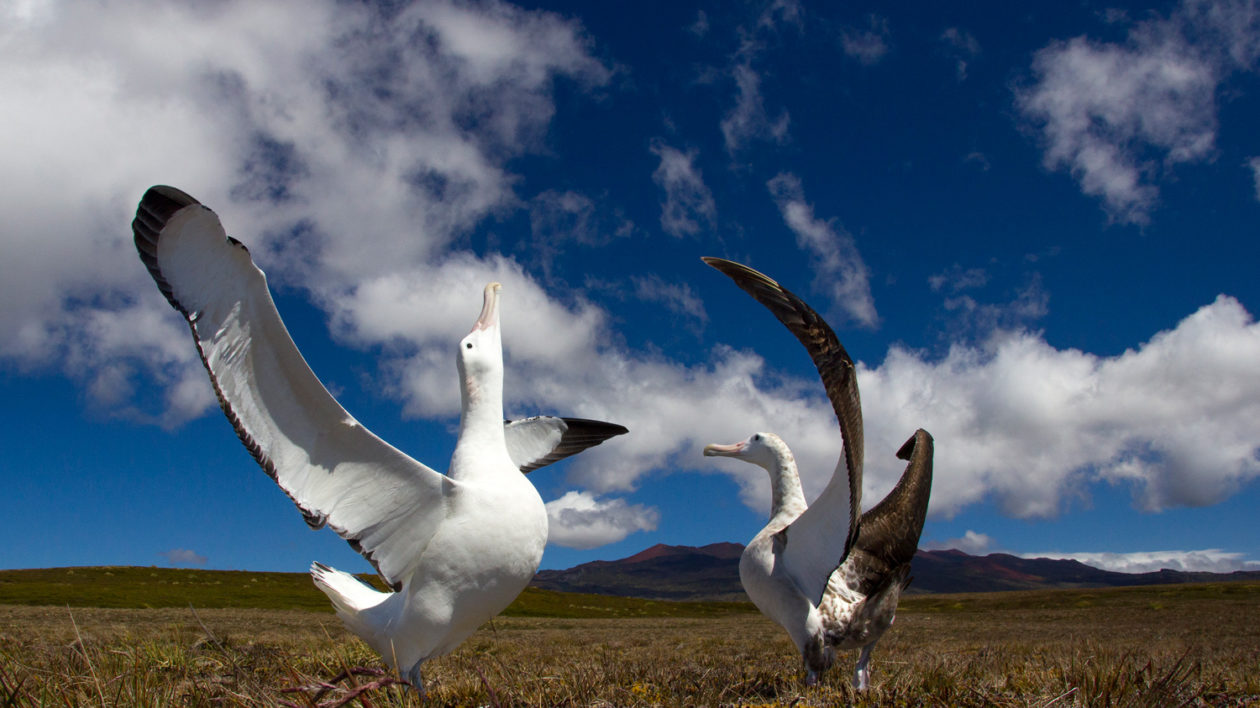
Rodent eradication sometimes involves minor mortality of abundant non-target wildlife. Never are populations permanently affected. And if poisoning alien rodents is “cruel,” it’s far less so than allowing native birds to be slowly gnawed to death.
Without exception opponents of island recovery projects demand safer and more humane “alternatives.” But if an alternative other than brodifacoum exists, it has yet to be discovered.
Here’s the response of Island Conservation’s global affairs director, Gregg Howald: “Bring us something that will work; we will be the first to adopt it.”
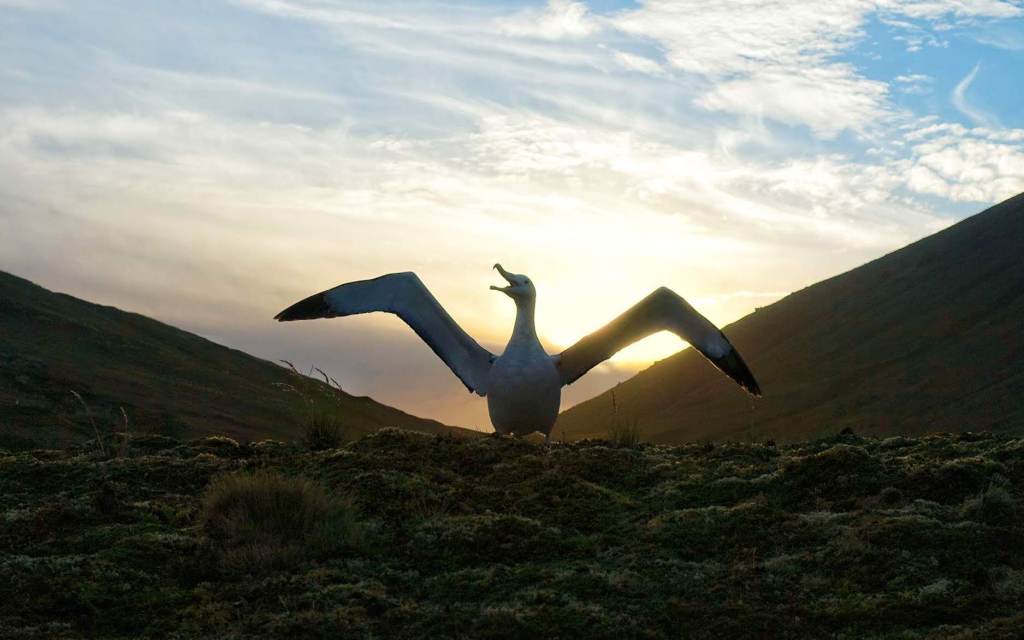



It sounds as though the eradication of a non native mouse species has been a long time in coming and is long due. Thank you Ted for your important contribution to global health.
So, where has that crusty old codger ted Williams gotten off to now? Sure do(n’t) miss him…..
What an eye-opening and distressing article! Never would I have thought I could be convinced to defend the use of brodifacoum, nor would I have thought outdoor/feral cat supporters could be one-upped. It astounds me that people can excuse anything an invasive mammal does, while completely dismissing the carnage it inflicts on native birds. Thank you for this information-packed piece, I’m going to start writing letters.
The general public is full of morons. Keep up the good work.
My favourite saying for years now has been “the devil is in the details”. Certainly applies to this subject. Do wish some of those, no doubt well intentioned folks, would search out more info before jumping on the latest bandwagon.
Thanks for keeping us informed in a thoughtful way.
Great article. Hard to dispute eradicating the mice. Do the folks who think poisoning the mice is cruel let them run all over their kitchen counters pooping and gnawing on their food?
It is sad that humans caused so many of the problems faced by indigenous wildlife, such as the loss of life and habitat of millions of birds by zombie mice and feral cats. It is also sad that some people feel the predators should be protected at all costs. They can’t have it both ways. Science has not come up with a method to eradicate zombie mice without “harming” them at the same time. I am waiting for the “naturalists” to spend their money to open and run laboratories that will show us the way!!
I especially appreciate learning the names of the organizations that are working against these desperately-needed mouse eradications. I just wrote to the Animal Legal Defense Fund to let them know, politely, what I think of their terrible policy. I know one message won’t change their minds, but at least they’ll know that news about their misguided mission is spreading. Working for the continued reduction of endemic species and nesting seabirds, which is what they are essentially doing, really is awful.
This seems to me to be another case of man interfering with nature.. if man has caused the imbalance they we should what ever steps necessary to correct it!I ‘‘tis unconscionable that we allow these mice to run amuck amidst defenseless birds!